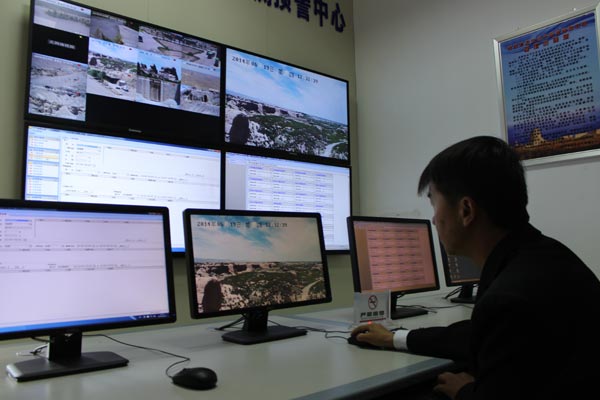 |
|
For Xie Yanming who heads a team of about 10 people guarding the ruins of Suoyang City in the Gobi Desert, it is an unbelievable honor to have their work brought to international attention. Wang Kaihao / China Daily
|
Salinity, underground shifting and sandstorms are of the greatest concern. However, Xie admits their outpost struggles to attract young professionals to stay. He says remote data analysis will solve the problem.
Data will be sent to the Dunhuang Academy, which is 150 kilometers away, and well known for its administration of the Mogao Caves in Dunhuang. The caves were listed as World Heritage sites in 1987, one of the earliest in China.
According to Su Bomin, head of the conservation institute at the academy, he and his team are required to monitor all earthen relics and caves on the Silk Road which were listed as World Heritage sites and stretch from Gansu province to the Xinjiang Uygur autonomous region.
"Institutions protecting heritage areas are not only custodians of cultural relics," Su says. "We will provide suggestions or warnings when we find abnormal data. When talking about World Heritage, people tend to talk about how to better utilize them, but it should be a priority to preserve them."
He says the Mogao Caves now only receive 3,000 visitors a day. Though the number is set to double when a tourist center opens later this year. The time visitors are able to spend in each open cave will be reduced accordingly. The caves will be closed when humidity levels surpass 62 percent.
Su admits that there is no perfect example from which to learn in terms of how to carry out monitoring work, because each site has its own characteristics.
World Heritage protectors all over the country face the dilemma of how to preserve their unique slice of history.
